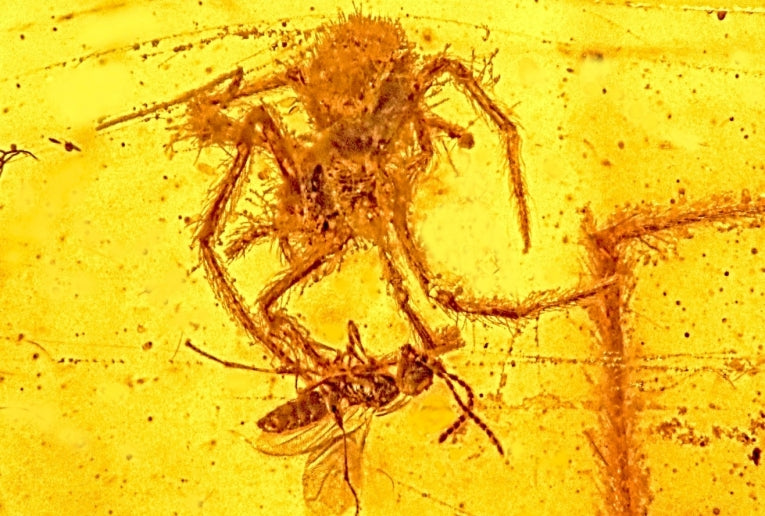You are wandering about minding your own parasitic business. Suddenly this thug with a web jumps on you and you think it's all over. But no! There is poetic justice for the prey, and the predator in this case.
Both are enveloped in a sticky resin before the fleshy messy bits can be shown on camera. Cut! As the plot of a disaster movie, the dinosaurs at the time would have loved it. Unfortunately, the invention of celluloid from cell walls and cameras from cardboard boxes was much later, so we only have a uniquely beautiful piece of amber from Myanmar to preserve the critical moment. As the amber from millions of Roman, Victorian or Viking pieces of jewellery has been closely examined, we can assume this event is pretty unusual.
Oregon State University zoology professor George Poinar, Jr. is a world expert on insects trapped in amber. As he states, "This was a male wasp that suddenly found itself trapped in a spider web. This was the wasp's worst nightmare, and it never ended. The wasp was watching the spider just as it was about to be attacked, when tree resin flowed over and captured both of them." He published the findings in a new publication in the journal Historical Biology.
Both of these species here are extinct, but from many relatives still alive, we can piece together what could have happened. The snared male wasp is from a group of spider and insect egg parasites, while some present-day spiders maintain a sociable web.
This web, too, contains a male spider as well as this juvenile. Webs themselves don't stretch much further back in time as the oldest found is 130 million years old, while spiders themselves have ancestors from 200 mya. The murder now seems to have been stopped for ever, in a timeless moment. The parasite seems to receive retribution with the predator, by the action of a tree's resin.










